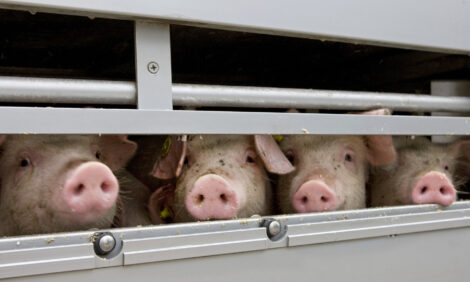



Livestock and Products Production Update 2004 - Hungary
HUNGARY - This is the latest Livestock and Products report by the Foreign Agriculture Service, looking at the swine industry in Hungary.Report Highlights:
The Government of Hungary is providing extra subsidies to the swine sector to correct market shortfalls and prepare for EU Accession when the sector will no longer be subsidized. Other EU-acceding countries, such as Czech Republic and Poland, are doing likewise. Analysts expect a drop in Hungary’s pork production and export numbers in upcoming years.
Export Expansion
Since the beginning of 2004, the swine sectors in the European Union (EU) and Hungary
have been on an export rally. This is due to bearish domestic consumption and soaring feed
grain prices.
The export refund of the EU on sales to third (non acceding) countries is EUR 0.40/kg (USD
0.49). The Government of Hungary introduced support in the amount of HUF 140/kg (USD
0.67) for 5,000 MT pork (half carcass) and HUF 65/kg (USD 0.31) for 3,400 MT live hogs
exported to non-EU countries, Czech Republic and Slovakia.
Hungary’s pork exports have averaged around 150,000 to 200,000 MT in the last years.
Imports are about ten percent of exports. One third of the sales are destined to EU
countries, while half the exports are destined to neighboring countries and Asia. Growing
sales of subsidized hogs and pork is a hot issue in Central E Europe. Croatia imposed trade
restrictions on foreign animal products (See GAINS Report HR 3025), but in February 2004
demonstrating Hungarian farmers demanded supplemental tariffs or an import ban against
(subsidized) imports from Czech and Poland.
Declining Animal Stocks
Hungary’s swine stock was 5,138 thousand head in August 2003 of which sows numbered 361,000 head. Annual pig numbers regularly bottom out in December due to high demand and backyard slaughters before Christmas. Opening animal stock for 2004 was under 5 million. Hog prices were 13% lower in February 2004 than a year ago, but prices started to climb again in the last weeks.
EU Membership
Under the Common Agricultural Policy (CAP) of the EU, Hungarian swine farms will receive no
production support and receive much lower export refunds than they did in the last years.
Some animal welfare subsidies and more stable feed grain prices will have a positive effect
on production. However, industry and trade contacts expect a 20-25% percent reduction in
pork production from 2004 to 2006. At the same time, many outdated and small size
slaughterhouses had to be closed due to stringent food safety requirements of the EU.
Hungary will remain a net exporter during the coming years, but its export to third countries
such as Russia or Asia may decline.
Source: USDA Foreign Agricultural Service - 18th March 2004








